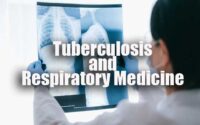Paediatric Surgery Questions and Answers
Paediatric Surgery Questions and Answers paper for the written examination is given below. Candidates who are looking for Paediatric Surgery exam Questions and Answers paper can find in this section. The applied candidates who are getting prepared for the Paediatric Surgery can view this page for the Paediatric Surgery Last Ten Years Questions and Answers Papers.

Download the Paediatric Surgery Questions and Answers & Solutions & make it as a reference for your exam preparation. Take advantage of these Paediatric Surgery Questions and Answers Papers in a proper manner to get qualifying Marks. Last 5 years Paediatric Surgery Questions and Answers Papers provided here. Candidates who are applied for the above exam can check and download the Paediatric Surgery Questions and Answers Papers from here.
Questions and Answers on Paediatric Surgery
1. Adjuvant chemotherapy stands for
(1) Chemotherapy given after removal of primary tumor
(2) Chemotherapy given before removal of primary tumor
(3) Chemotherapy given before and after removal of primary tumor
(4) Chemotherapy given in combination of radiotherapy and surgery
2. Pulmonary artery is a derivative of which branchial Arch
(1) Arch I
(2) Arch I
(3) Arch IV
(4) Arch VI
3. The electrolyte imbalance encountered in patients of infantile hypertrophic pyloric stenosis is
(1) Metabolic acidosis hyponatremia hypochloremia with paradoxical aciduria
(2) Metabolic Alkalosis hyponatremia hypochloremia with paradoxical aciduria
(3) Respiratory Acidosis hyponatremia hypochloremia with paradoxical aciduria
(4) Respiratory Alkalosis hyponatremia hypochloremia with paradoxical aciduria
4. What is incorrect regarding ectopic ureters in female patients
(1) Ureter insertion is usually found distal to continence mechanism
(2) 1/3 ureters open at level of bladder neck
(3) Usually have a normal voiding pattern
(4) Physical examination is not helpful in diagnosis
5. Suicide gene cancer therapy involves
(1) Herpes simplex virus thymidine kinase gene
(2) Papillomavirus thymidine kinase gene
(3) Herpes zoster virus thymidine kinase gene
(4) No virus is involved.
6. Intramural duodenal hematoma with signs of upper intestinal obstruction, bilious vomiting and gastric dilatation indicates
(1) Blunt trauma abdomen due to rapid deceleration or direct blow
(2) Haemophilia
(3) Idiopathic thrombocytopenic purpura
(4) All of the above
7. Which statement is correct?
(1) Kidney damage: Cisplatin, methotrexate
(2) Lung damage: Dactinomycin, Anthracyline
(3) Cardiotoxicity: Busulfan, bleomycin
(4) GIT mucosa: Methotrexate, Ifosfamide
8. Underlying cause for pain and bleeding in meckels diverticulum is
(1) Inflammation
(2) Gastric mucosa
(3) Duodenal mucosa
(4) Ectopic pancreatic tissue
9. What is incorrect regarding ureterocele
(1) Usually associated with upper pole of duplex system
(2) Found more commonly in males
(3) Cystocopy of both full and empty bladder is required
(4) Ectopic ureters and mega ureters are important differential diagnosis
10. FNAC (fine needle aspiration cytology) was first reported in
(1) 1904 by Grieg and Grey
(2) 1910 by Grieg and Grey
(3) 1904 by Lee et al
(4) 1910 by Lee et al
11. Which statement stands true
(1) Laparoscopy is superior to computed tomography in staging and evaluating neoplasm of peritoneum
(2) Computed tomography is superior to laparoscopy in evaluating and staging neoplasm of peritoneum.
(3) Laparoscopy in patients of unexplained ascites is contraindicated
(4) Magnetic resonance imaging is now the gold standard for evaluation of peritoneal tumors.
12. Pyriform Sinus Fistula
(1) Usually presents as acute suppurative thyroiditis
(2) It is a remnant of second branchial arch
(3) Is a clinical diagnosis does not require investigations and work up
(4) Is always managed conservatively
13. The Weigert Meyer law deals with which anomaly
(1) Anterior urethral valves
(2) Duplication of urethra
(3) Duplication of ureters
(4) Posterior urethral valves
14. What is true for horseshoe kidneys
(1) Usually lie lower than normal kidneys
(2) The renal pelvis is deviated posteriorly
(3) Are usually symptomatic
(4) Require prophlactic separation
15. What are the prerequisites for fetal gene therapy
(1) Gene selected should be known
(2) Selection of correct cell
(3) Appropriate vector
(4) All of the above
16. 10 year old female child presented with pain, edema, ecchymosis, hypotension, features of hemolysis, DIC, nausea, vomiting, change in mental status. Most likely diagnosis is
(1) Septicemia
(2) Bleeding disorder
(3) Blunt trauma abdomen and head injury
(4) Snake bite
17. Which statement is incorrect
(1) congenitally abnormal kidneys are more susceptible to injury from blunt trauma
(2) Hemodynamic instability from persistent bleeding is the absolute indication for intervention
(3) Renal injuries are classified into 6 grades
(4) Renal injuries require assessment of long-term renal function with renal scans and blood pressure monitoring.
18. What best explains WT1 gene
(1) It is a complex gene encoded by 10 exons, the carboxyl terminus contains 4 zinc finger domains which facilitates binding to DNA
(2) It is a complex gene encoded by 8 exons, with the nitrogen terminus having 4 magnesium finger domains that bind to DNA
(3) It is a complex gene encoded by 12 exons which produce four distinct RNA
(4) it is a complex gene encoded by 14 exons, which produce 6 distinct RNA
19. Surgery in torticollis is indicated
(1) At birth
(2) In progressive facial hemi hypoplasia
(3) Demand of patient or attendant
(4) Is not indicated
20. Most common cause of congenital gastric outlet obstruction besides pyloric stenosis is
(1) Pyloric atresia
(2) Antral atresia
(3) Pyloric web
(4) Antral
| Practice Set | MCQs |
| Quiz | Questions and Answers |
21. What is incorrect about crossed renal ectopia
(1) Majorly kidneys are fused to their ipsilateral mate
(2) Right to left crossover is more common
(3) More commonly found in males.
(4) Uterers have normal insertion into the bladder
22. What best represents Down Syndrome
(1) Hypotonia, Microcephaly, epicanthal folds, low set ears, short stature, nuchal skin.
(2) Hypertonia, Microcephaly, small palpebral fissures, small mouth, low set ears, short stature
(3) Hypo or hyper tonia, Microcephaly, micro ophthalmia, low set ear, clett lip and palate.
(4) Hypertonia, Microcephaly, microphthalmia, low set ears, hypoplastic nails, mental retardation.
23. Glasgow coma scale score for children includes:
(1) Eye opening, verbalization and motor response with score of 8 or less considered to be severe brain injury
(2) Eye opening, verbalization, motor response and sensory response, with score of 10 or less indicating severe brain injury
(3) Eye opening, verbalization and motor response with score 10 or less than 10 indicating severe brain injury.
(4) Eye opening, verbalization, motor response and sensory response with score 8 or less than 8 indicating severe brain injury
24. What is correct for Wilms tumor
(1) Involvement of IFVC wall with Tumour is stage 3 and initial chemotherapy is recommended
(2) involvement of IVC wall is stage 4 and requires chemotherapy and radiotherapy, surgery has no role to play.
(3) involvement of IVC wall is stage 2, after initial chemotherapy surgery can be done for remaining tumor
(4) Involvement of IVC wall requires surgery with cardiopulmonary bypass, chemotherapy has no role to play
25. Most common chest wall deformity is
(1) Pectus Excavatum
(2) Pectus Carinatum
(3) Jeune’s Syndrome
(4) Jarco Levin Syndrome
26. 2 year old male child presents in the emergency with complaints of sudden epigastric pain persistent vomiting, solitary air fluid level in left upper quadrant, non passage of nasogastric tube in the stomach. This is consistent with diagnosis of
(1) Gastric volvulus
(2) Microgastria
(3) Gastric perforation
(4) Foreign body oesophagus
27. An increasing frequency of indirect inguinal hernia in children is found in all except
(1) Cystic fibrosis
(2) Ehlers -Danlos syndrome
(3) Congenital dislocation of hip
(4) Increasing age of child
28. Teratogens cause maximum damage in
(1) First trimester
(2) Second trimester
(3) Third trimester
(4) Post Natally
29. Which statement best describes burn in children
(1) Area of burn injury is best estimated with rule of nines
(2) The Lund and Browder type chart gives a more precise estimate of area of burn
(3) Area of burn is best estimated with Parkland and Brooke formula
(4) Using Shrine chart is the best way of estimating the area of burn
30. Infant presenting with mediastinal mass, weight loss, failure to thrive, fever, anaemia and horner’s syndrome is most likely to have
(1) Thymoma
(2) Lymphoma
(3) Neuroblastoma
(4) Tubercular lymphadenopathy
31. A patient can be accepted for Extra Corporal Membrane Oxygenation in all conditions except
(1) Gestational ages more than 32 weeks
(2) Lack of active bleeding or coagulopathy
(3) Irreversible lung dysfunction
(4) Birth weight is more than 2 kgs.
32. What is incorrect regarding duodenal atresia
(1) It is usually result of failure of recanalization
(2) Double duodenal atresia has a distinct familial incidence
(3) Usually are periampullary
(4) Around 25% of duodenal atresia are associated with other anomalies
33. What is incorrect about Spigelian Hernia.
(1) Spigelian Hernia develops at the intersection of linea semilunaris and linea semicircularis
(2) Defect involves transversus abdominis and internal oblique muscles
(3) Defect involves external oblique and internal oblique muscles
(4) More common in girls usually found below the umbilicus
34. Fetal surgery has been used for
(1) SCT,CCAM,CDH,PUV.
(2) Heart block, aqueductal stenosis.
(3) pulmonary Aortic obstruction, twin transfusion syndrome.
(4) All of the above
35. Apple peel intestinal atresia is classified as
(1) Type lb
(2) Type 2a
(3) Type 3b
(4) Type 4a
36. In tension pneumothorax what is correct
(1) The underlying cause is usually a pulmonary laceration or injury to trachea or large bronchus.
(2) The intrapleural air pressure is less than that of the atmosphere
(3) Venous return to the heart increases with increase in pulse rate and respiratory rate
(4) Needle catheter drainage should be done immediately after the chest X-Ray
37. According to Evans staging system for Neuroblastoma what is incorrect
(1) Stage IV-S, stands for: Stage 1 or 2 neuroblastoma with remote disease confined to liver and subcutaneous tissue and bone cortex
(2) Stage 1 stands for tumor confined to organ of origin.
(3) In stage 3 bilateral lymph nodes may be involved
(4) TNM clinical staging was given by Hartman etal
38. What is incorrect about Whipple’s triad
(1) Described in patients of insulinoma
(2) Hypoglycemia with fasting
(3) Glucose level 80% of normal
(4) Relieved by glucose administration
39. Poorest prognosis in CDH
(1) LHR less than 1, herniation before 24 weeks, dilated intrathoracic stomach, liver up.
(2) LHR less than 1, herniation before 32 weeks, dilated intrathoracic colon, kidney spleen up
(3) LHR less than 1, herniation after 32 weeks, kidney spleen liver up.
(4) LHR less than 1, herniation before 24 week, dilated intrathoracic colon and small intestine, kidney up
40. Good prognostic indicators for Neuroblastoma includes
(1) Elevated neurone specific enolase
(2) Loss of heterozygosity of chromosome Ip
(3) Vasoactive intestinal peptide secretion
(4) Stroma poor Shimada histology
41. What is incorrect for umbilical artery catheterization
(1) Cannot be done after 6 hours of life
(2) Usual approach via umbilical stump
(3) Can also be approached by a mini laparotomy
(4) Umbilical catheters have a longer functional life then peripheral arterial catheters
42. Absence of hind gut is frequently associated with
(1) Vesico intestinal fissure
(2) Pouch Colon
(3) Both of the above
(4) None of the above
43. What is not correct regarding malrotation
(1) Herniation of primary midgut loop occurs
(2) The axis of the primary midgut loop is superior mesenteric artery
(3) The post arterial mid gut segment gives rise to terminal ileum caecum and part of transverse colon
(4) The midgut rotates 210 degrees in a clockwise direction
44. All are used as a diagnostic tools for diagnosis of malrotation except
(1) Contrast study
(2) Endoscopy
(3) Ultrasound
(4) CT scan
45. Which statement is false.
(1) Neonatal hypoglycemia is defined as glucose level less than 40 mg/dl
(2) Newborn depletes its hepatic glycogen stores within 2 days
(3) Bolus infusions of 10% glucose is the advised treatment for new born hypoglycemia
(4) Upto 50% glucose maybe used for newborn hypoglycemia if central line is present



